
G.Skill Ripjaws MX780 and Ripjaws KM780 RGB Reviews
As we reported at Computex 2015, G.Skill is yet another company joining the world of gaming peripherals and has now released a mouse, headset and keyboard for your consideration. As a memory manufacturer, it’s not exactly the first name you think of for such things, but diversification has worked well for Corsair. Whether G.Skill can be as successful in its own endeavours remains to be seen, so let’s take a look at the MX780 mouse and KM780 RGB keyboard. Note that, despite asking, we don't have confirmed UK pricing so we're going with estimates based on the US pricing with tax added.G.Skill Ripjaws MX780 Review
Manufacturer: G.SkillUK price (as reviewed): Approx. £45-50 (inc VAT)
US price (as reviewed): $59.99 (ex Tax)
G.Skill’s first mouse is the MX780, an ambidextrous, eight button unit that’s equipped with an 8,200 DPI laser sensor and can be customised in shape and weight.
With its many gaps and edges, the MX780 doesn’t look particularly comfortable and this opinion holds up after using it. In a palm grip, for example, your ring finger ends up resting awkwardly against the side where there are hard bumps and grooves to contend with, and they’re rather noticeable. The tip of your pinky is also left dragging on the mouse mat as there isn’t any support or a natural resting point for it. The situation improves somewhat with a claw grip (it’s a bit weighty for a fingertip only stance), but the positioning of your ring finger remains an annoyance.
There are a few ways you can adjust the shape of the MX780. First, using the supplied tool, you can turn a screw on the bottom of the mouse to raise and lower the hump. There’s a large difference between the maximum and minimum heights so it should cater for most preferences, and the shape of the hump itself is decent.
The other means of adjustment involves the magnetic, swappable side sections, used to switch the mouse from right to left-handed. This is a neat way of ensuring that left-handed players aren’t left out when it comes to proper thumb support, but it also just transfers the problems we had with our ring and pinky fingers to the other hand. We tried using both thumb support sections together but to little avail, the added support being too far back to make much of a difference to our flailing digits.
The MX780 weighs in at 111g out of the box, which is relatively weighty already, but if you like a particularly heavy mouse you can add up to 9g more with the pair of 4.5g weights. As shown, these are installed into the sides of the mouse and held in place by the side sections.
The build and material quality are very good with the MX780. The main sections are described as anti-fingerprint and this definitely held true during our testing, and these soft-touch parts are also comfortable to hold. The side sections are textured for additional grip, and the metal body keeps the whole mouse feeling very robust. Underneath you’ll find a set of PTFE feet enabling silky smooth movements and completing the product is the braided, non-detachable 1.8m USB cable. At first, this was dragging on our mousemat, but after lifting the cable clear of the desk it stayed that way and wasn’t a problem afterwards.
One poor choice of material is on the scroll wheel. It does use rubber, but oddly it’s very smooth and low friction, so much so that at first our fingers would often slip off of it without making a scroll. It forces you to use a deliberately heavy roll, and a more textured finished may have helped here. Also, the steps also aren’t as well defined as they should be.
Thankfully, the other buttons aren’t problematic – the two main ones use Omron switches and are very well balanced; not too heavy, not too light. The DPI toggle is excellent too, being far enough back to not be hit accidentally but not too far as to require an exaggerated stretch to reach. It’s also large, raised and has a light action, meaning you can easily perform repeated clicks to cycle through your DPI stages quickly and accurately. The thumb buttons, which are the same on both sides, have a very springy action. Unless you have particularly impressive dexterity it’s quite hard to hit the two buttons on the opposite side of your thumb. This isn’t a criticism as it’s standard for an ambidextrous mouse; it just means it’s more of a six-button design than and eight button one.

MSI MPG Velox 100R Chassis Review
October 14 2021 | 15:04

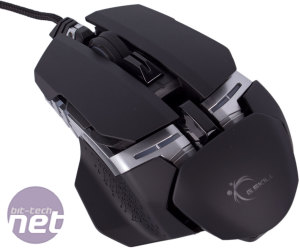

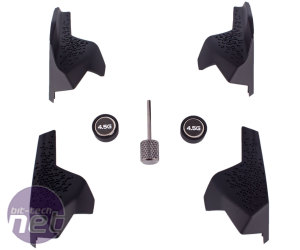
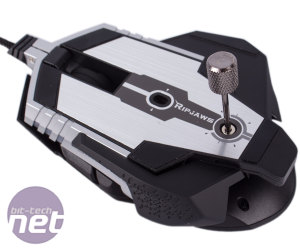



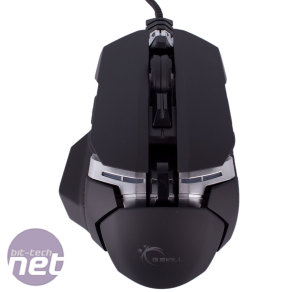
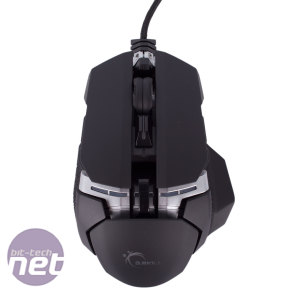







Want to comment? Please log in.